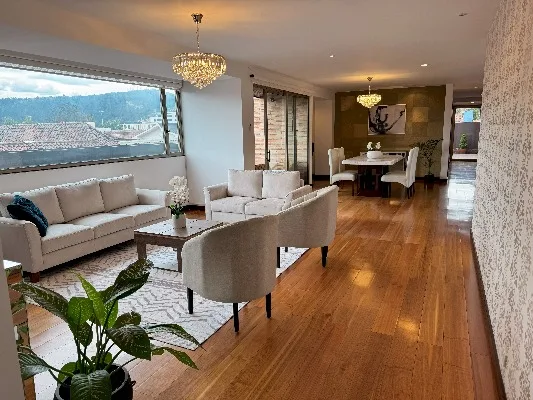Cuenca Symphony Orchestra returns to Pumapungo with three performances of Vivaldi’s Il Giustino
By Stephen Vargha
After a successful return to the stage last month, the Cuenca Symphony is moving forward with ambitious plans to present more concerts for the residents of Cuenca. Maestro Michael Meissner is excited to present Antonio Vivaldi’s Baroque opera, “Il Giustino.” It is the first time the Renaissance Italian composer’s opera will have been performed in Ecuador.
 Performances are Thursday and Friday at 7 p.m. and Saturday at 6 p.m at the Teatro Pumapungo, Calle Larga at Huayna-Capac. Entry is free.
Performances are Thursday and Friday at 7 p.m. and Saturday at 6 p.m at the Teatro Pumapungo, Calle Larga at Huayna-Capac. Entry is free.
Baroque orchestras have from ten to thirty players, primarily strings. In a Baroque orchestra, the strings and winds play the same sort of music melodically and rhythmically. This smaller orchestra is perfect for the Covid-19 health requirements currently in place.
“With the limited amount of space we have right now, Baroque music is perfect for the Cuenca Symphony,” Meissner explains.
Derived from the Portuguese word “barroco” (oddly shaped pearl), the term “Baroque” has been widely used to describe the period in Western European music from about 1600 to 1750. One of the major philosophical themes of Baroque comes from the Renaissance interest in ideas from the ancient Greeks and Romans, who believed that music was a powerful tool of communication. In Baroque opera, the purpose is to move emotions from the text and music into the hearts and minds of the audience. Meissner thinks the music is perfect for everyone in these unusual times.
“We are convinced that music unites us, strengthens us and transmits life, hope and as in Il Giustino, love and justice triumph,” he says.
 There are numerous people anticipating this week’s three performances of the opera. That includes Niki and Lee Nichols, who moved to Cuenca four months ago from northern New Mexico. “I have realized that I have never heard a Vivaldi opera. I’m looking forward to it. I can’t remember all the places I attended opera performances, but several U.S. cities, Mexico City, Stuttgart all come to mind. Now I get to add Cuenca,” Niki Nichols said.
There are numerous people anticipating this week’s three performances of the opera. That includes Niki and Lee Nichols, who moved to Cuenca four months ago from northern New Mexico. “I have realized that I have never heard a Vivaldi opera. I’m looking forward to it. I can’t remember all the places I attended opera performances, but several U.S. cities, Mexico City, Stuttgart all come to mind. Now I get to add Cuenca,” Niki Nichols said.
“Growing up, attending symphony performances was part of my life. My family had season tickets to the San Antonio Symphony for as long as I can remember. My elementary school also provided field trips to see the rehearsals,” Niki added.
Her husband, Lee, thinks the timing of this opera is perfect. “In my opinion the arts can be the way to heal and renew a community, a city and even a country. Viva la Renaissance,” he asserted.
He added, “There are many forms of wealth. For me opera has always completed the cycle of the creative arts. It gives a sense of cultural richness and belonging.”
On Monday night, Meissner, and the symphony as well, as the opera singers under the stage direction of María Belén Ochoa, were rehearsing at Teatro Pumapungo. They went through the entire opera that has a historical setting. Located in Byzantium, relevant political figures, as well as other allegorical ones appear. Not surprising, love denied is the cause of a war, and it is in this context that the protagonist, Giustino, appears. At first, he finds himself asleep in a bucolic and rural place, dreaming of the glory and power that the goddess Fortune has promised him.
 Soon Giustino’s first contact with royalty takes place, when he saves the emperor’s sister from a bear. Later, Giustino shows his worth again, in this case saving Empress Arianna from a sea monster. Finally, misunderstandings, jealousy and greed are turned against Giustino, but love and the rule of the righteous triumphs.
Soon Giustino’s first contact with royalty takes place, when he saves the emperor’s sister from a bear. Later, Giustino shows his worth again, in this case saving Empress Arianna from a sea monster. Finally, misunderstandings, jealousy and greed are turned against Giustino, but love and the rule of the righteous triumphs.
Born in 1678 in Venice, Italy, Vivaldi is considered one of the forerunners of romantic music and programmatic music. He was a Baroque composer, virtuoso violinist, teacher, and cleric. Recognized as one of the greatest Baroque composers, his influence during his lifetime was widespread across Europe. He is known mainly for composing many instrumental concertos for the violin and a variety of other instruments, as well as sacred choral works and more than forty operas.
Having Vivaldi’s Baroque opera performed in Cuenca is one reason why Niki Nichols left rural New Mexico for the city high in the Andes Mountains. “The fact that Cuenca has an active symphony orchestra and arts community was very important in my choosing to move here. Once I found the digital site, I watched the performances regularly.”
Now, she can see it in person. To assist her and the rest of the audience, the opera will be translated in real time from Italian to Spanish on a huge screen above the stage.
Maestro Meissner thinks everyone will have an opportunity to enjoy this beautiful opera. “Even with only 30% capacity for our performances, there should be ample seating due to the symphony performing three times,” the symphony’s leader announced.
Nonetheless, the maestro is encouraging people to show up early to guarantee a seat.





















